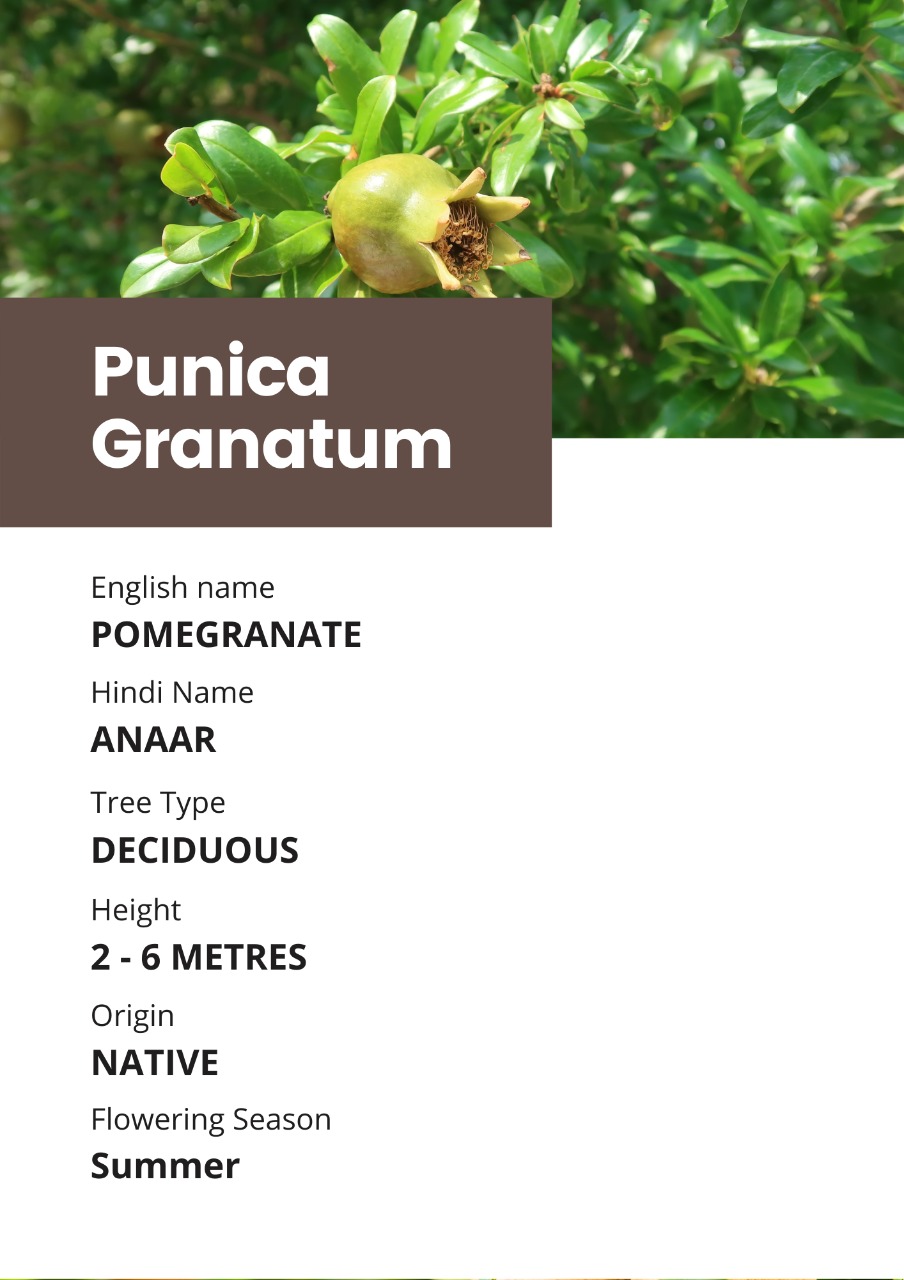
POMEGRANATE
Punica granatum (Pomegranate):
Family: Punica granatum belongs to the Punicaceae family
Common Names: It is commonly known as pomegranate
Flowering period: The tree flowers in summer.
Habitat: It is native to Northern India but has adapted to a variety of warm climates and now is grown in various countries across the globe.
Uses: Pomegranate is used to treat Cancer, Osteoarthritis and other diseases. It is also used in natural and holistic medicine to treat sore throats, coughs, urinary infections, digestive disorders, skin disorders, arthritis, and to expel tapeworms. It is mostly cultivated for its fruit, the pomegranate, or for usage as an ornamental tree.
Key features: Punica granatum is a multi-stemmed deciduous small tree that grows 6-20 feet tall typically, but might also grow upto 30 feet tall in some regions. The plant usually has trumpet shaped orange-red flowers that bloom throughout summer either singly or in clusters which are located at the ends of branches. Flowers give way to fruits that are almost the same size as oranges with a leather-like peel and globose shape. These pomegranates are initially yellowish green but turn a bright red after ripening. The interior of the fruit is divided into compartments with edible sacs called arils that enclose the seeds. The tree also has narrow pointed glossy green leaves that are arranged either opposite to one another or in whorls.